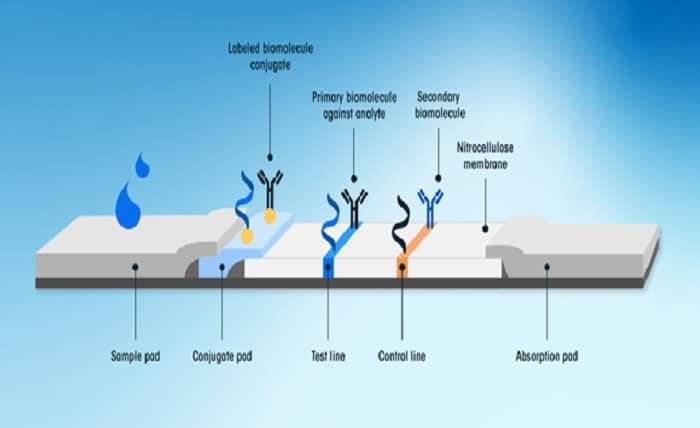Understanding Lateral Flow Cassettes: How They Work and Why They Matter

In the fast-paced world of diagnostics, lateral flow cassettes have emerged as an essential tool for rapid and easy-to-use testing. Whether it’s a COVID-19 antigen test, a pregnancy test, or food safety screening, lateral flow cassettes are the silent workhorses making quick and accurate results possible in minutes. In this blog post, we’ll explore what lateral flow cassettes are, how they work, their applications, and why they continue to be a vital part of modern diagnostic technology.
What Are Lateral Flow Cassettes?
Lateral flow cassettes, often referred to as rapid test kits or lateral flow devices (LFDs), are compact diagnostic tools that detect the presence (or absence) of a target analyte in a liquid sample without the need for complex lab equipment. These analytes can be pathogens, hormones, biomarkers, or chemicals, depending on the application.
The term “cassette” refers to the plastic housing that encases the test strip, protecting it and providing a user-friendly format. Inside this cassette lies the real magic—a lateral flow test strip made of materials like nitrocellulose and cellulose that enable capillary movement of liquid samples.
How Do Lateral Flow Cassettes Work?
The working principle of lateral flow cassettes is based on capillary action, where a liquid sample moves across a test strip, interacting with specific reagents embedded along the way. Here’s a simplified breakdown of the process:
- Sample Application: A sample, such as saliva, urine, blood, or food extract, is applied to the sample pad.
- Migration: The liquid migrates along the strip via capillary action.
- Conjugate Pad: The sample encounters a pad containing antibodies or antigens labeled with colored particles (commonly gold nanoparticles or fluorescent tags). These bind to the target analyte, forming a complex.
- Test and Control Lines: As the mixture continues to migrate, it passes over the test line and control line. If the target analyte is present, it will bind to capture antibodies on the test line, producing a visible signal.
- Result: A line appears in the test zone (positive result). The control line confirms that the test has worked properly.
This entire process usually takes between 5 to 30 minutes, depending on the test.
Types of Lateral Flow Cassettes
There are generally two types of lateral flow assay formats:
- Qualitative Tests: These provide a simple positive or negative result (e.g., pregnancy tests or COVID-19 antigen tests).
- Quantitative Tests: When combined with a reader device, these tests can measure the amount of analyte present (e.g., for monitoring drug levels or allergens).
Additionally, lateral flow tests can detect:
- Antigens: For detecting infectious agents like viruses or bacteria.
- Antibodies: For determining exposure to pathogens.
- Nucleic Acids: In some advanced formats using amplification methods.
Advantages of Lateral Flow Cassettes
There are several reasons why lateral flow cassettes have become a staple in diagnostics:
- Speed
Most tests deliver results in under 30 minutes, often in just 5–10 minutes. This is crucial in situations requiring quick decision-making.
- Simplicity
No special equipment or training is needed to use them, making them accessible to healthcare professionals and the general public alike.
- Portability
Their compact size and lack of power requirements make them ideal for point-of-care (POC) testing, remote locations, and emergency situations.
- Cost-Effectiveness
Lateral flow cassettes are relatively inexpensive to produce, making them suitable for large-scale screening and use in low-resource settings.
- Versatility
They are used across a wide array of fields—from medical diagnostics and veterinary testing to food safety and environmental monitoring.
Applications of Lateral Flow Cassettes
- Healthcare and Medical Diagnostics
- COVID-19 Testing: Perhaps the most widely recognized use recently, allowing at-home and mass testing for the SARS-CoV-2 virus.
- Pregnancy Testing: Detecting human chorionic gonadotropin (hCG) in urine.
- Infectious Disease Detection: HIV, malaria, flu, and hepatitis are commonly diagnosed using lateral flow cassettes.
- Drug Testing: Used for detecting drugs of abuse in urine or saliva.
- Veterinary Medicine
Lateral flow tests help detect diseases like parvovirus in dogs, feline leukemia virus in cats, and bovine mastitis in cows.
- Food Safety and Agriculture
- Detection of pathogens like Salmonella, E. coli, and Listeria in food samples.
- Monitoring for contaminants like mycotoxins and pesticides.
- Environmental Testing
Used to detect toxins, pollutants, or pathogens in water sources and soil.
Limitations of Lateral Flow Cassettes
While lateral flow cassettes offer many benefits, they are not without limitations:
- Lower Sensitivity: Compared to lab-based methods like PCR, lateral flow tests may have lower sensitivity, especially in early-stage infections.
- False Positives/Negatives: Improper handling or testing outside the intended conditions can affect accuracy.
- Subjective Interpretation: Reading faint lines can sometimes be subjective, though smartphone apps and readers are helping to address this issue.
The Future of Lateral Flow Technology
Innovation in materials science, microfluidics, and biosensors is enhancing the capabilities of lateral flow cassettes. Some exciting developments include:
- Digital Readers: Integration with smartphones or dedicated readers to provide quantitative results and reduce human error.
- Multiplex Testing: Ability to test for multiple targets on the same strip.
- Enhanced Sensitivity: Use of fluorescent, magnetic, or enzymatic labels to improve detection limits.
- Eco-Friendly Designs: Efforts to reduce plastic usage and develop biodegradable components.
As demand for rapid, reliable diagnostics continues to grow—especially in response to emerging infectious diseases and global health challenges—lateral flow technology is set to play an even greater role.
Conclusion
Lateral flow cassettes are powerful diagnostic tools that combine speed, simplicity, and affordability. From helping individuals test for pregnancy or COVID-19 at home to assisting veterinarians and food safety inspectors, these devices offer widespread utility across industries.
While they may not replace laboratory testing in every scenario, their importance in point-of-care diagnostics cannot be overstated. As technology continues to advance, lateral flow cassettes will likely become even more accurate, versatile, and integral to our daily lives.




